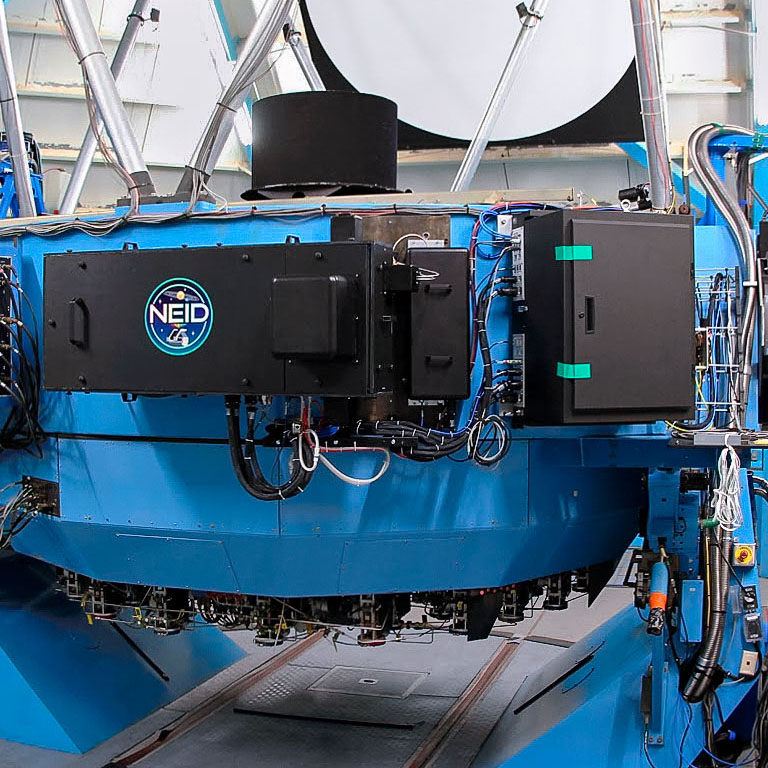Roughly 5000 "exoplanets" (planets orbiting other stars outside the Solar System) have been discovered, and that number is growing rapidly each year. These exoplanets possess a startling array of properties, leading to new and unexpected discoveries in this emerging field.
The WIYN 3.5-meter Telescope with the new NASA-funded $11M NEID spectrograph has become one of the world's premier facilities for radial velocity studies of exoplanets. WIYN and NEID together can detect Earth-mass planets in the "habitable zones" of nearby stars, where liquid water (and thus life) can exist on the planets' surfaces. Detection is not the only challenge, however; WIYN and NEID can answer fundamental questions: How did exoplanets form? What is their composition? Can they sustain life? And, ultimately, what can these exoplanets tell us about Earth?
NEID provides spectra of exoplanet host stars that have been identified by NASA missions like Kepler and TESS. These space missions are aimed at efficient detection of exoplanet candidates. Both missions identify candidates via the transit method, detecting tiny dips in the brightness of the host star when a planet crosses in front of the star. Follow-up radial velocity observations of planet candidates with ground-based telescopes allows us to determine the masses and orbital properties of the exoplanets.
In the last several decades, the need to detect and characterize exoplanets has pushed the precision of radial velocity measurement to ~1 meter per second. NEID is designed to achieve a precision of approximately 27 centimeters per second initially, and 10 centimeters per second with continued development. This extreme precision is required to routinely detect planets with masses and orbital radii similar to Earth’s.
Achieving this precision requires meticulous care in design. Starlight from the WIYN telescope travels through fiber-optic cables to an ultra-temperature-controlled, vibration proof vacuum chamber that houses the instrument. NEID's temperature must be controlled to better than 1/1000th of a degree and a laser frequency comb is used to calibrate wavelength to the extreme precision required to detect the tiny radial velocity wobbles caused by Earth-mass planets around Sun-like and cooler stars.
Spectrographs like NEID also enable us to study and characterize the detailed properties of the host stars themselves - properties and phenomena like the conditions in stars' atmospheres, their detailed chemical abundances, their surface "starspots" (analogous to sunspots on our Sun), their rotational and magnetic activity, and whether or not they are members of a binary (double) star system. All of these properties have important implications regarding whether or not a particular star and planetary system able to support life.
Songhu Wang and his students are working extensively with NEID data to determine exoplanet orbital parameters. They have conducted a slew of measurements of warm Jupiters, and found for the first time that warm Jupiters' orbits are preferentially more aligned with their host stars' equators than their hot Jupiter analogs. This finding provides strong evidence that hot Jupiters likely experienced violent history, while warm Jupiters formed quiescently.
To read more about the NEID instrumentation, please visit the WIYN website at: https://www.wiyn.org/Instruments/wiynneid.html


 The College of Arts
The College of Arts